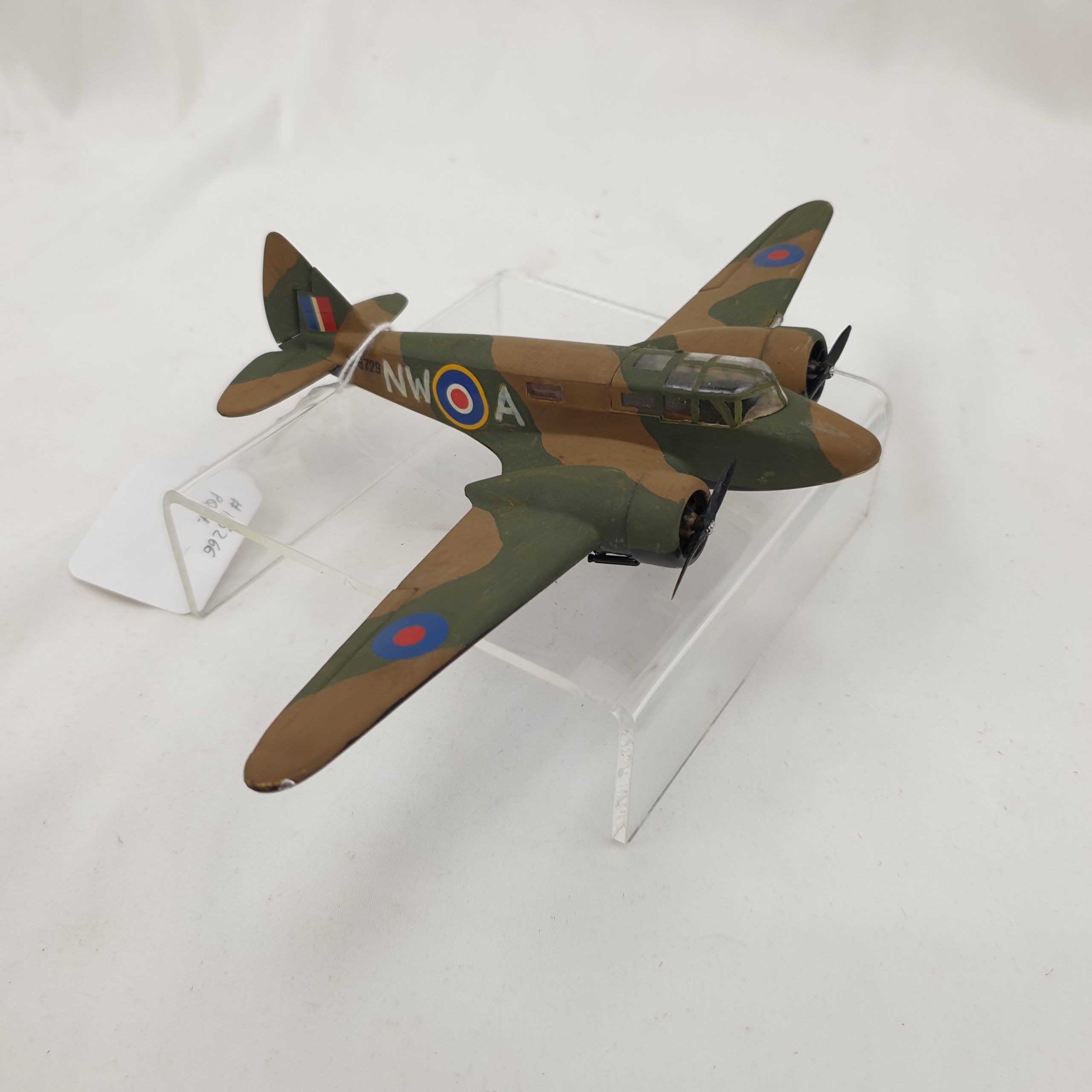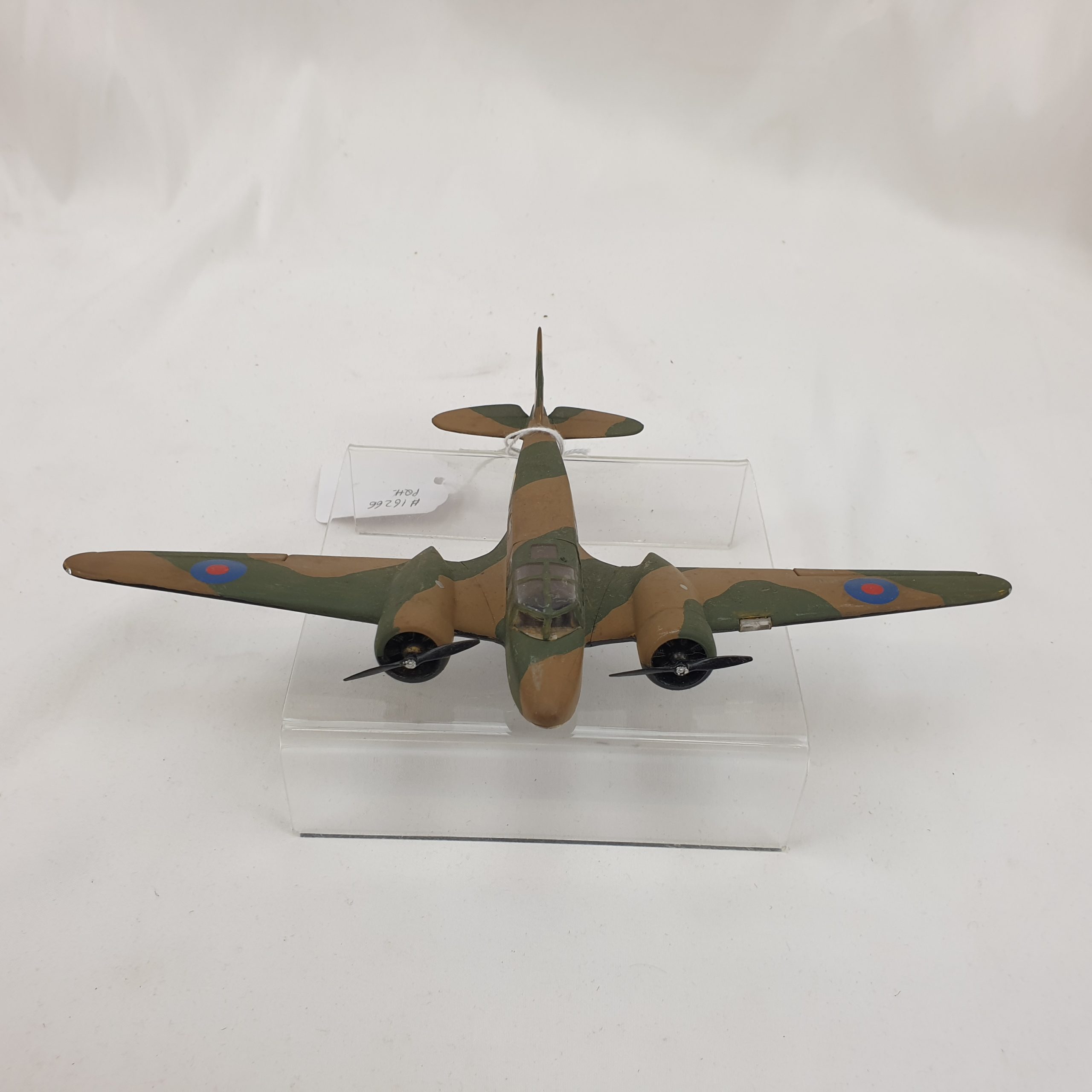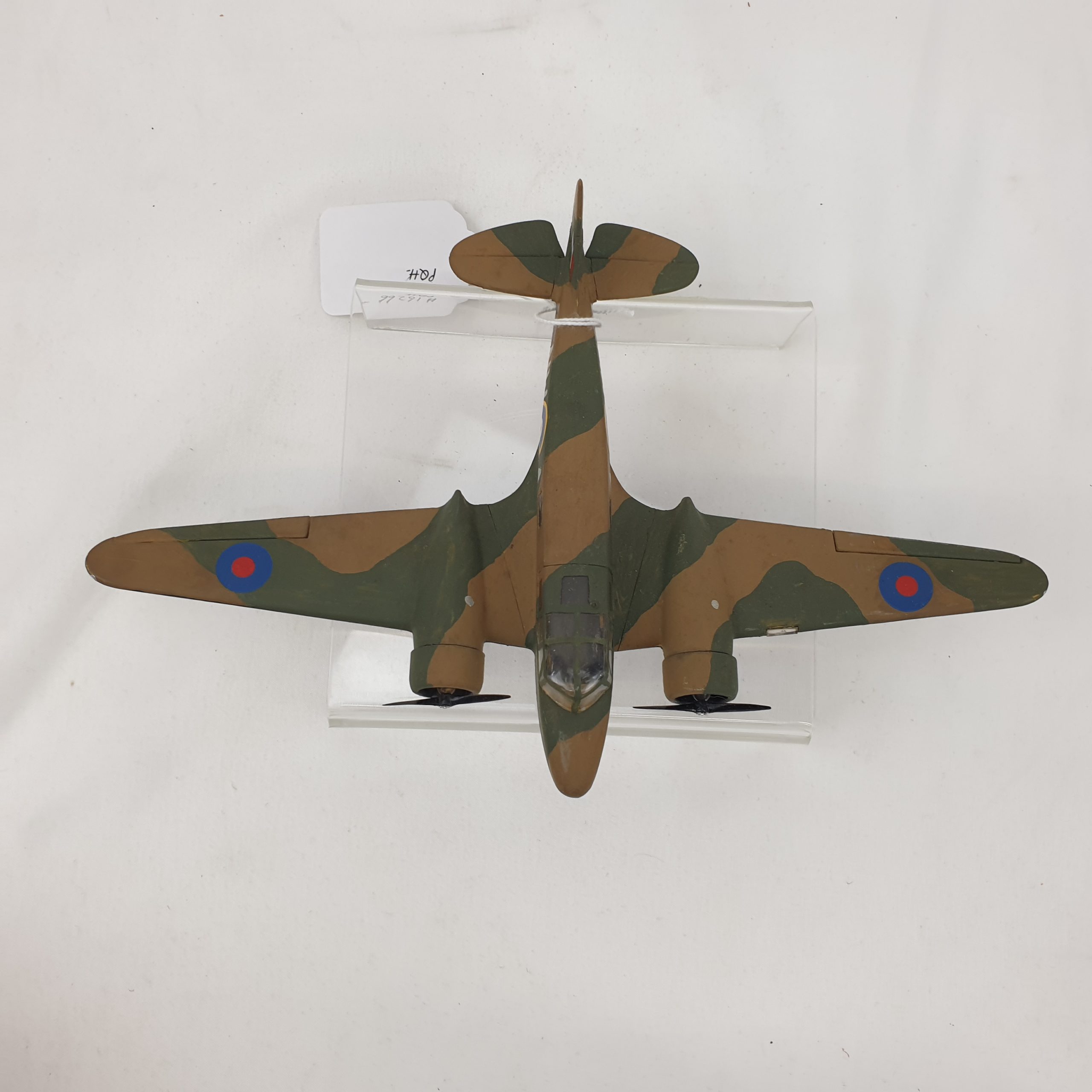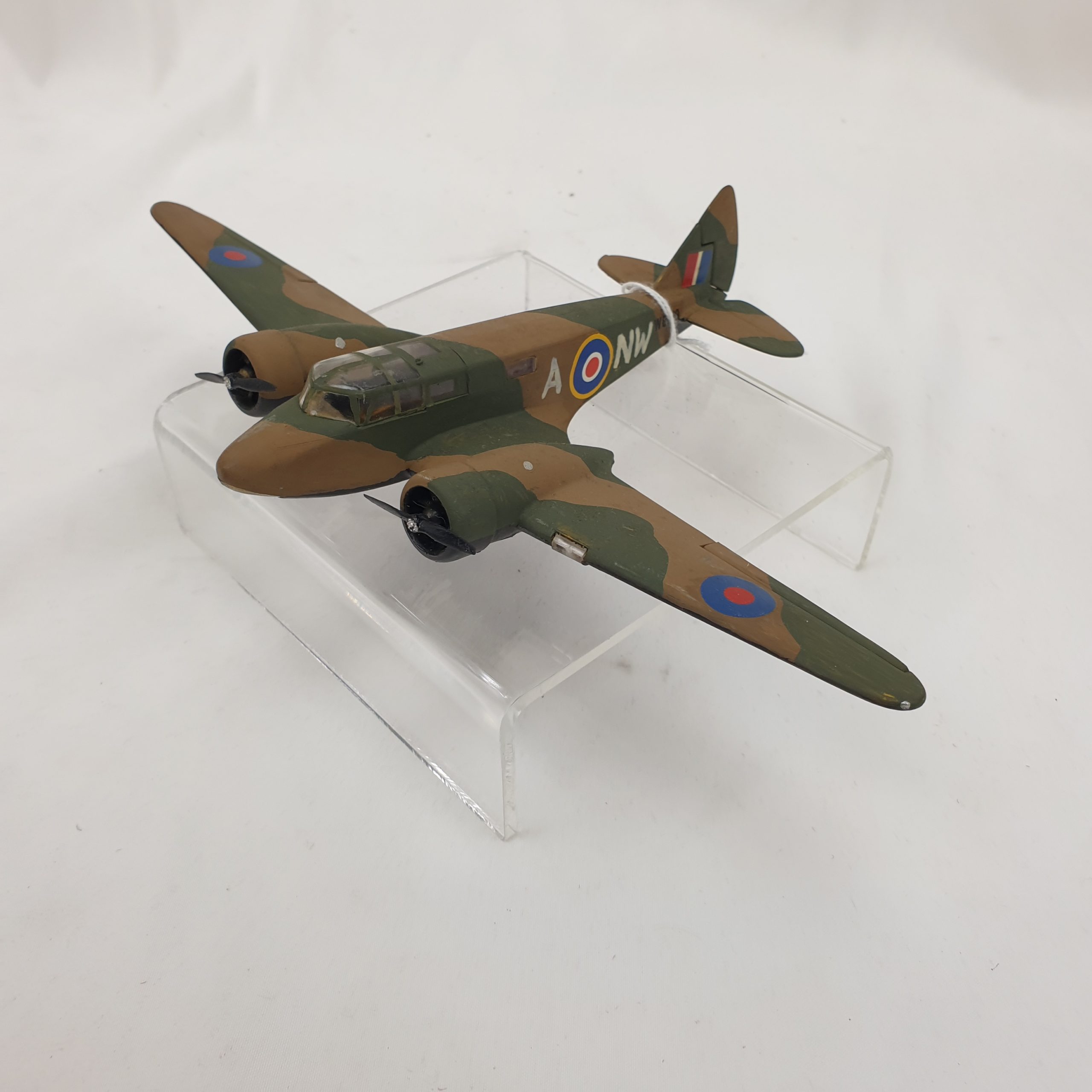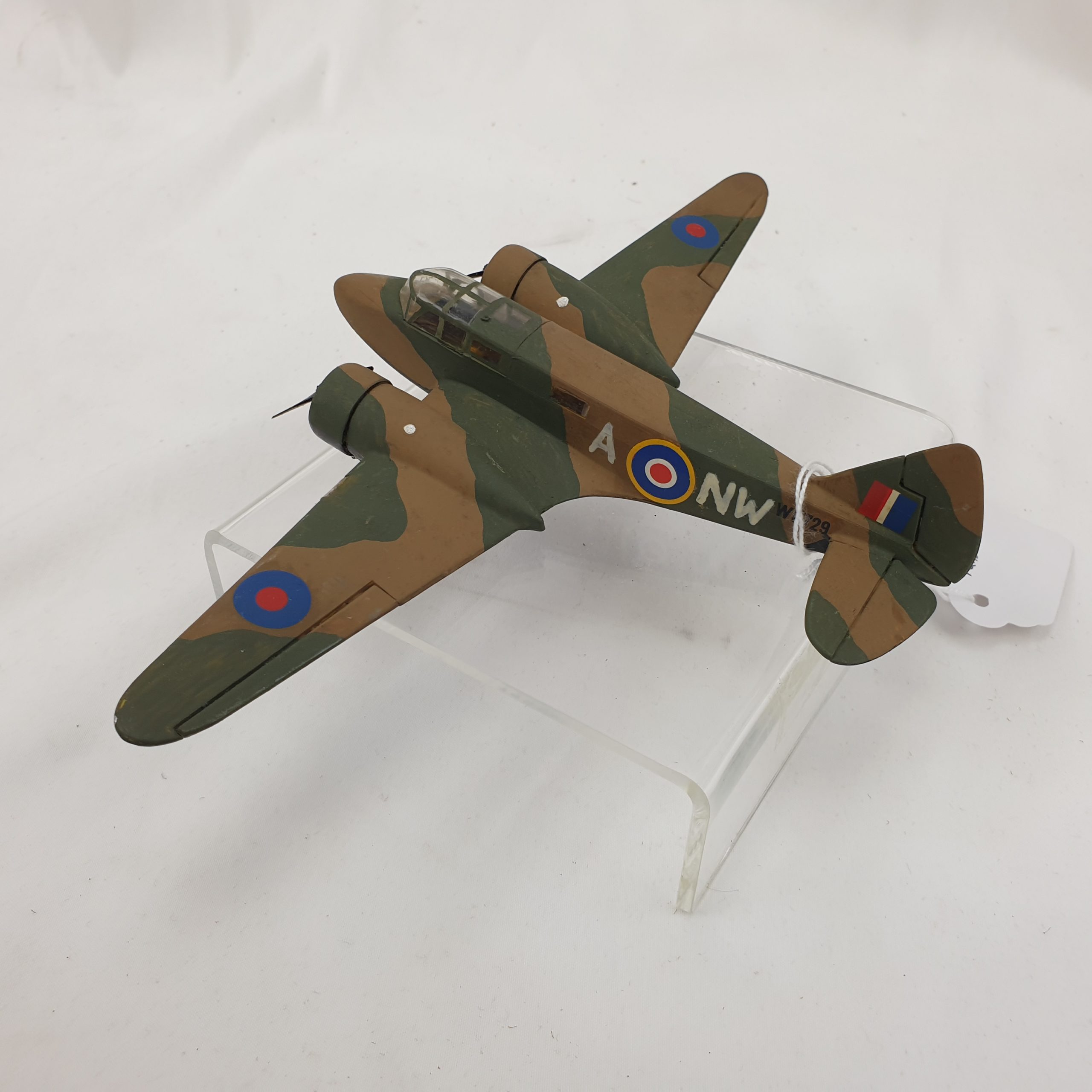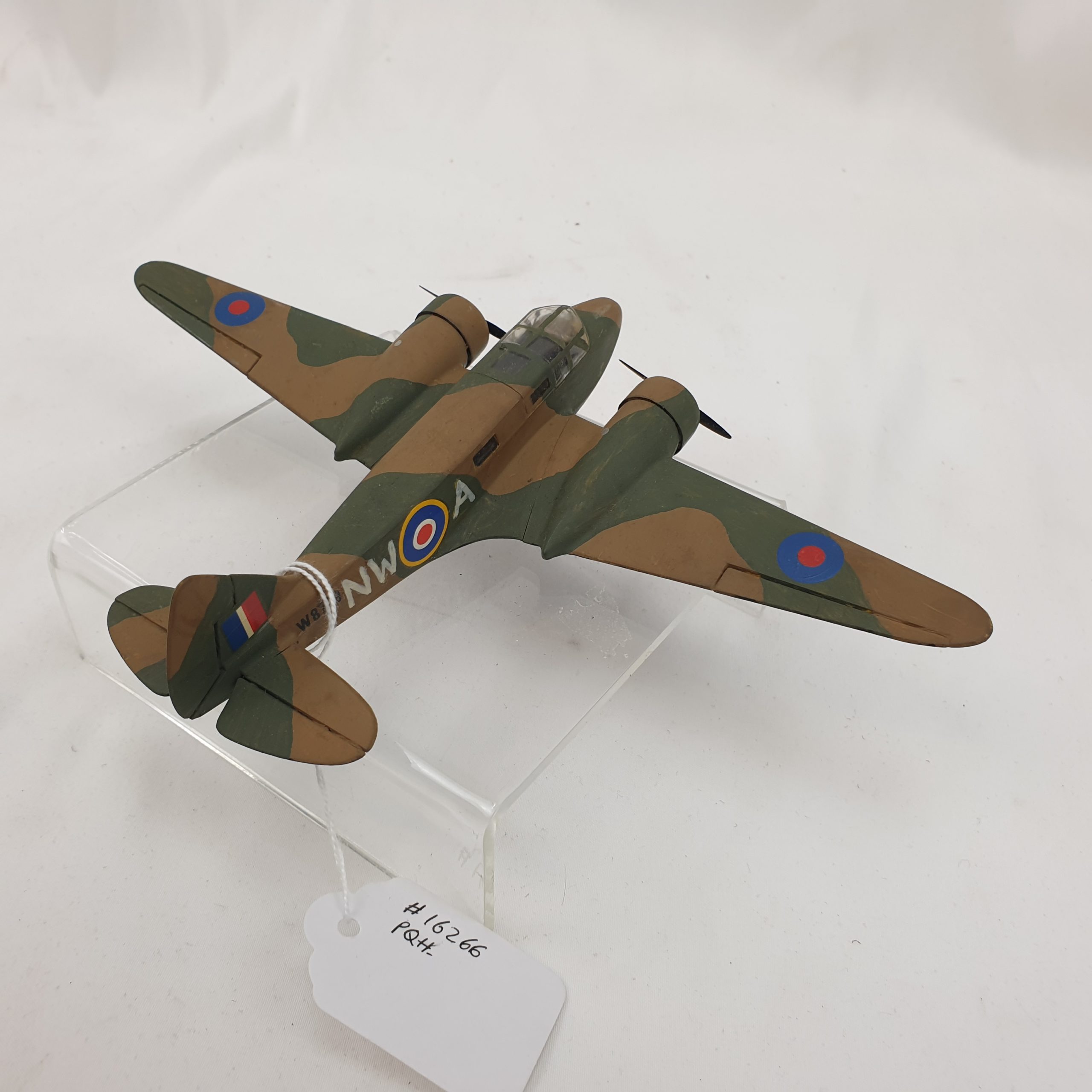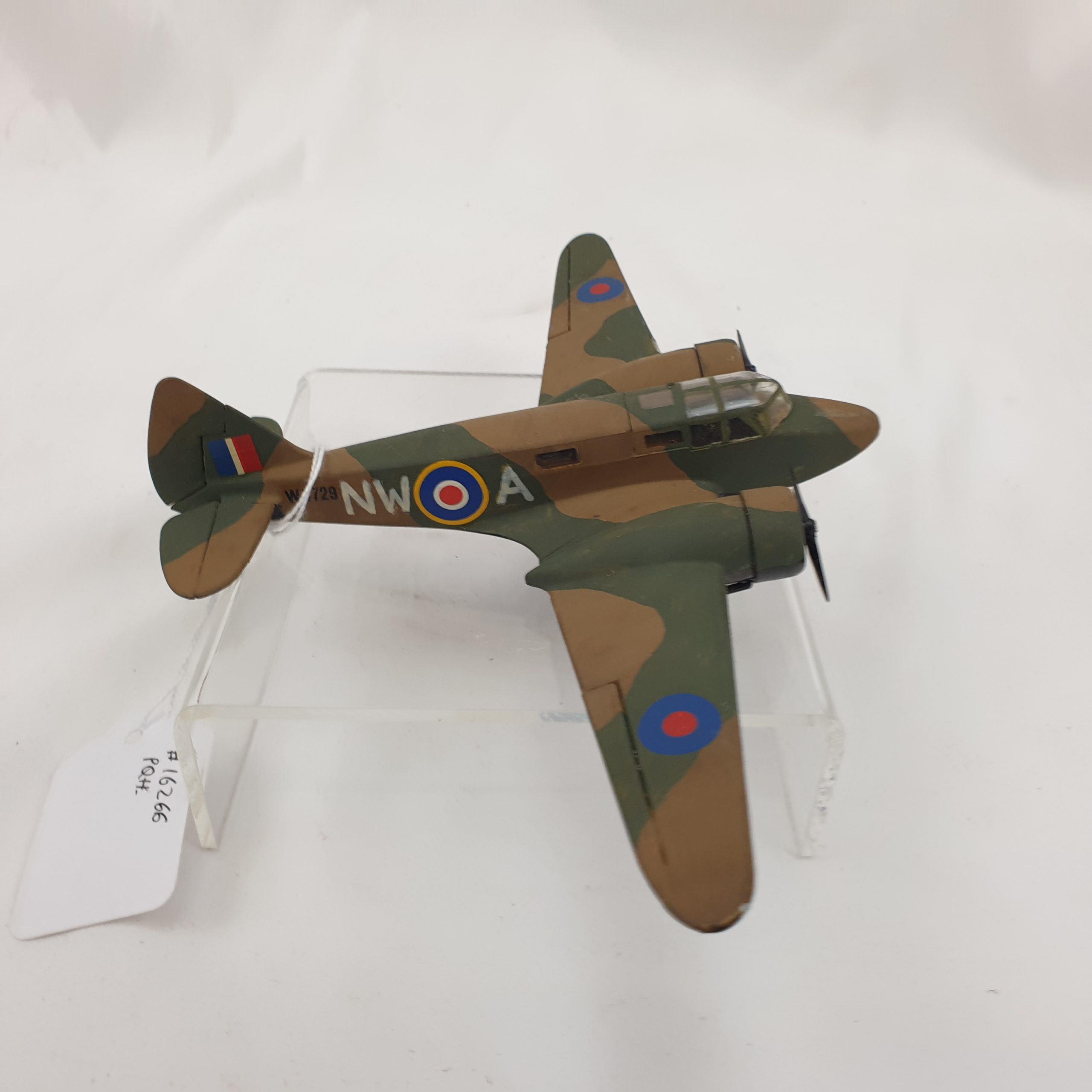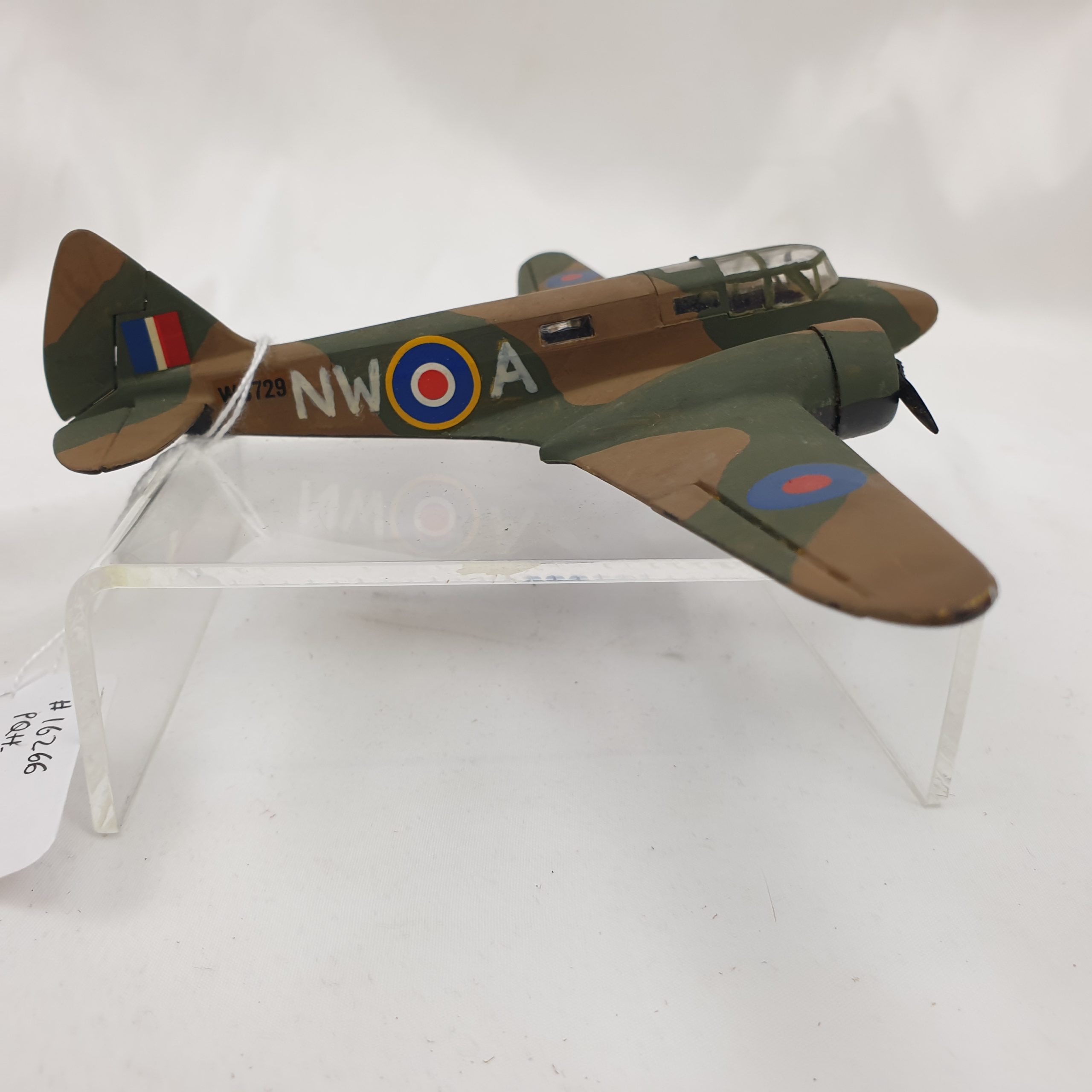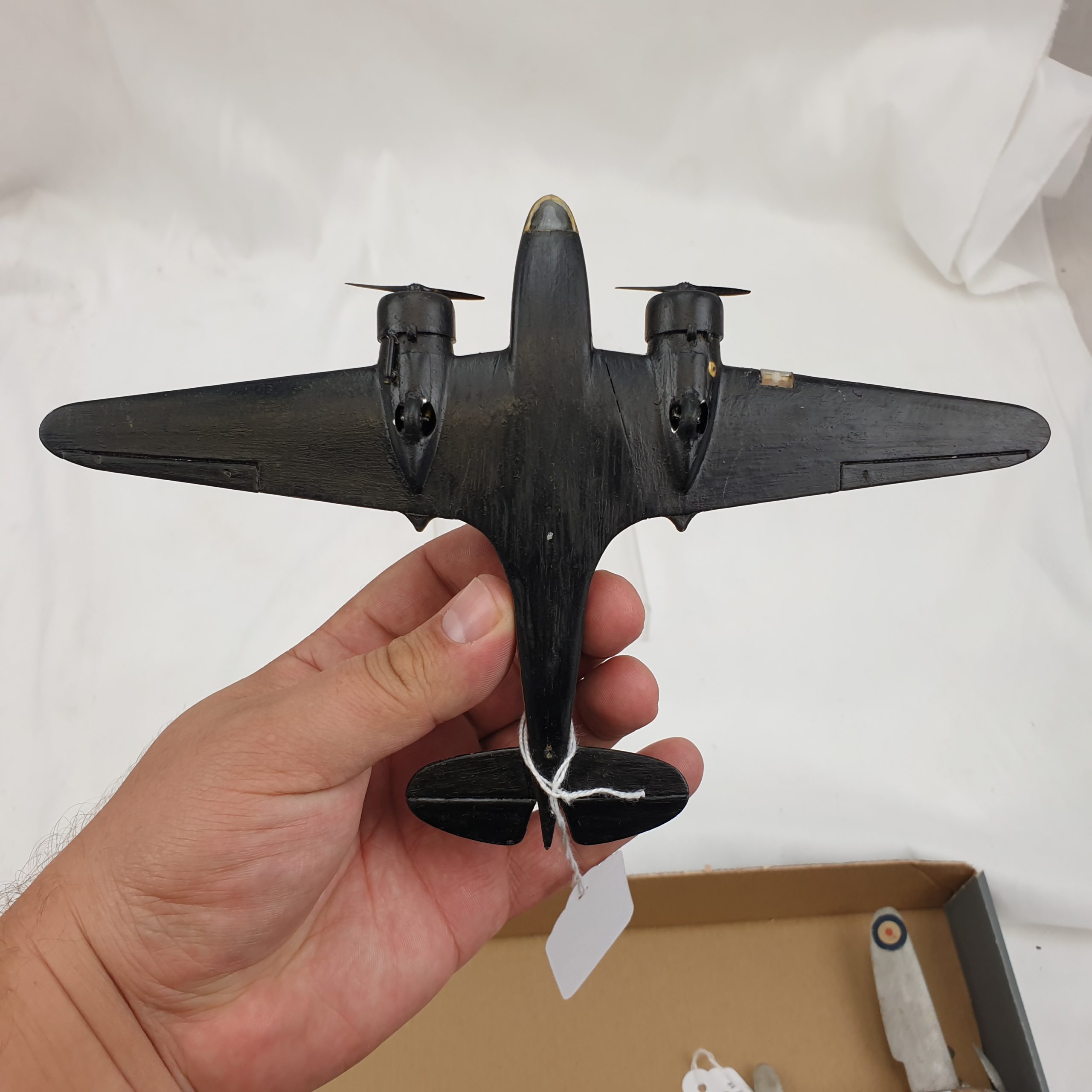~ Wooden Model of a British Airspeed Oxford Mk I Aircraft ~
The Airspeed AS.10 Oxford was a British twin-engine aircraft used primarily for training purposes during and after World War II. It was a versatile trainer and played a crucial role in training pilots and navigators for various aircrew positions. Here is a brief overview of the Airspeed Oxford:
Development:
Origins: The Airspeed Oxford was designed and built by the British aircraft manufacturer Airspeed Limited. It was developed as a military trainer aircraft in the late 1930s and was designed to meet the demand for a modern and versatile trainer for the Royal Air Force (RAF).
Design: The Oxford was a twin-engine, low-wing monoplane with a retractable undercarriage. It featured a crew of three to four, including the instructor, trainee pilot, and sometimes additional crew members like navigators or wireless operators.
Performance:
Engines: The Oxford was powered by various engines during its production, including the Armstrong Siddeley Cheetah IX and the Pratt & Whitney R-985 Wasp Junior radial engines. These engines provided the aircraft with sufficient power for training purposes.
Training Capability: The Oxford was designed to provide training for a wide range of aircrew roles, including pilot training, navigator training, radio operator training, and bomb-aiming training. It was known for its stability and ease of handling, making it a popular choice for training.
Operational Service:
Training: The primary role of the Airspeed Oxford was training. It served as a versatile trainer for various aircrew positions in the RAF and other Allied air forces. Pilots and aircrew members were trained on the Oxford before transitioning to operational aircraft.
Variants: The Oxford had several variants and adaptations, including the AS.10, AS.40, and AS.46. Some versions had additional equipment and modifications for specialized training purposes.
Post-War Service: After World War II, many Airspeed Oxfords continued to serve as trainers in various air forces and civilian training programs. Some were adapted for civilian use.
Legacy:
The Airspeed Oxford was an important contributor to the training efforts of Allied air forces during World War II. Its adaptability and versatility made it a valuable asset in preparing aircrews for combat. After the war, surplus Oxfords found use in civilian training programs and some were converted for other purposes, such as executive transport and aerial survey work.
Today, a few Airspeed Oxfords are preserved in museums and private collections, serving as a reminder of their significant role in the history of military aviation training during and after World War II.
~ Dimensions ~
The wingspan is 22.5 cm and the overall length of the piece is 15 cm.


